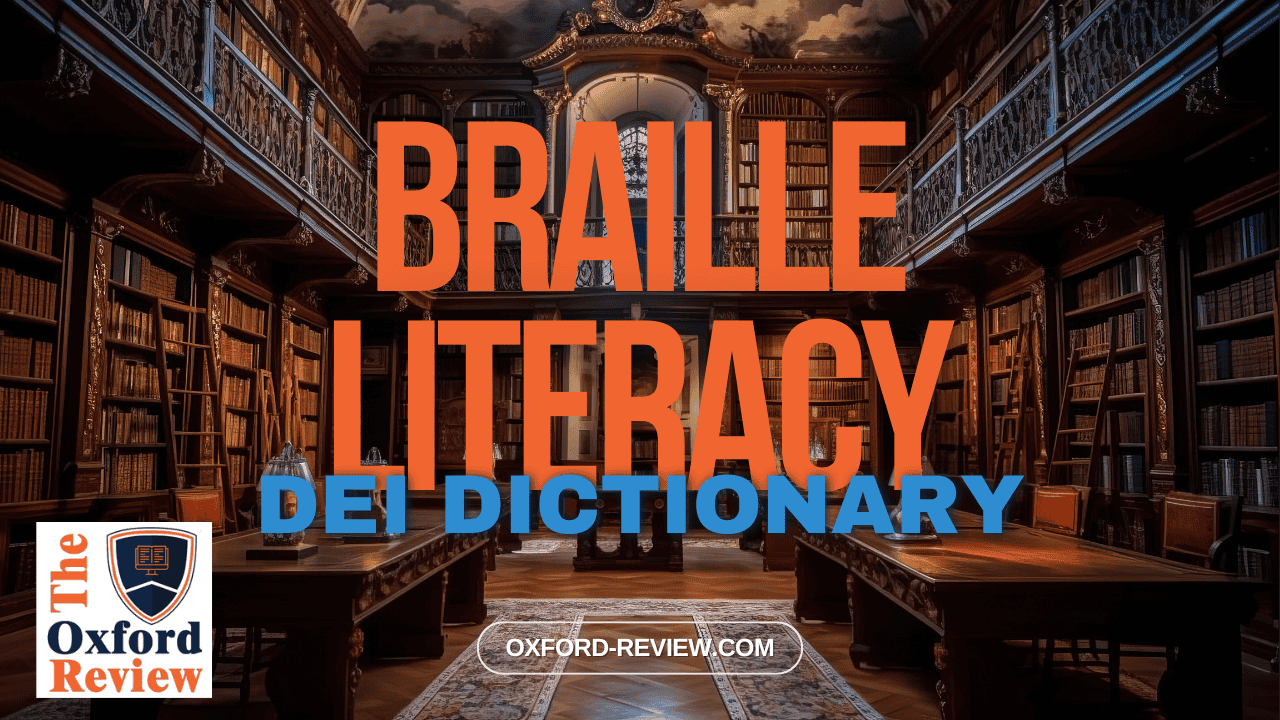Braille Literacy – Definition and Explanation

Braille Literacy: Unlocking Accessibility and Inclusion
Braille literacy stands as a beacon of empowerment for visually impaired individuals, offering a pathway to independence, education, and inclusion. In the realm of Diversity, Equity, and Inclusion (DEI), understanding Braille literacy is pivotal for fostering a more accessible society.
Definition:
Braille literacy refers to the ability to read and write using Braille, a tactile writing system created for people who are blind or visually impaired. Developed by Louis Braille in the 19th century, Braille utilises combinations of raised dots arranged in cells to represent letters, numbers, punctuation marks, and even musical notations. Through the sense of touch, individuals proficient in Braille can decipher written text, unlocking a world of information, communication, and independence.
Importance:
In the landscape of DEI initiatives, promoting Braille literacy is essential for creating equitable opportunities for the visually impaired. By ensuring access to education, employment, and information, Braille literacy fosters inclusivity and empowers individuals to fully participate in society. Moreover, it breaks down barriers to communication, enabling meaningful interactions and connections within diverse communities.
Example:
Imagine a visually impaired student, Sarah, attending a mainstream school. Through Braille literacy programs integrated into the curriculum, Sarah learns to read and write proficiently in Braille alongside her sighted peers. With access to Braille textbooks, resources, and technology, she excels academically, participating actively in class discussions and completing assignments independently. As Sarah progresses through her education, her Braille literacy skills open doors to higher education and career opportunities, enabling her to pursue her passions and contribute to society.
Conclusion:
Braille literacy serves as a cornerstone of accessibility and inclusion, empowering visually impaired individuals to navigate the world with confidence and autonomy. By championing Braille literacy initiatives, we can build a more equitable society where everyone has the opportunity to thrive, regardless of their visual abilities.
References:
Johnson, L. (1996). The braille literacy crisis for children. Journal of Visual Impairment & Blindness, 90(3), 276-278. https://journals.sagepub.com/doi/abs/10.1177/0145482X9609000323?journalCode=jvba
Spungin, S. J. (1996). Braille and beyond: Braille literacy in a larger context. Journal of Visual Impairment & Blindness, 90(3), 271-274. https://journals.sagepub.com/doi/abs/10.1177/0145482X9609000321?journalCode=jvba
Rex, E. J. (Ed.). (1994). Foundations of braille literacy. American Foundation for the Blind. https://books.google.com.ng/books?hl=en&lr=&id=kcMnYjZyJ9MC&oi=fnd&pg=PP7&dq=Braille+Literacy&ots=IV9wjGUxaX&sig=j35tQzXMu_FfEe9eLvIara809G0&redir_esc=y
Hoskin, E. R., Coyne, M. K., White, M. J., Dobri, S. C., Davies, T. C., & Pinder, S. D. (2024). Effectiveness of technology for braille literacy education for children: a systematic review. Disability and Rehabilitation: Assistive Technology, 19(1), 120-130. https://www.tandfonline.com/doi/full/10.1080/17483107.2022.2070676
Be impressively well informed

Get the very latest research intelligence briefings, video research briefings, infographics and more sent direct to you as they are published
Be the most impressively well-informed and up-to-date person around...
